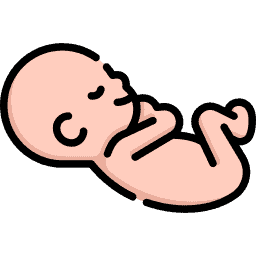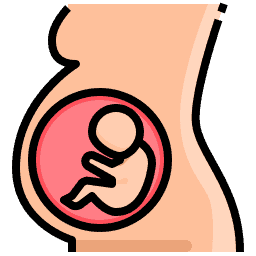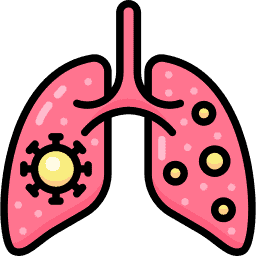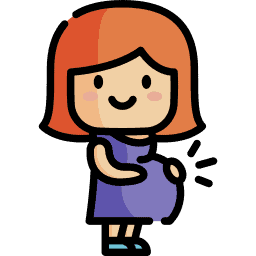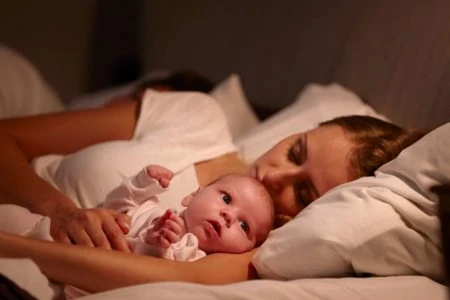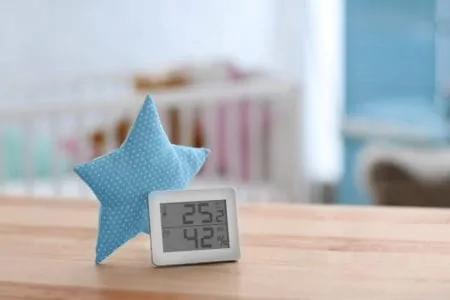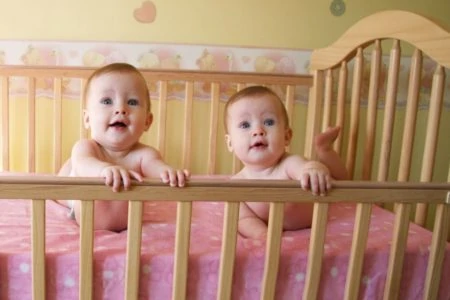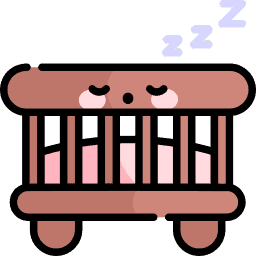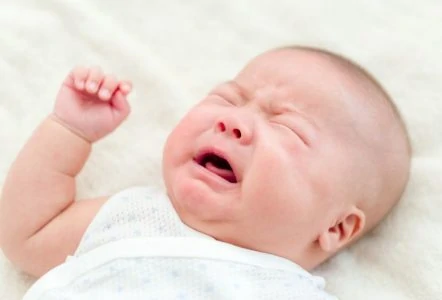Does the threat of SIDS have you losing sleep?
Do you find yourself watching your baby’s every breath at night and losing out on your own sleep?
This article will teach you everything you need to know about Sudden Infant Death Syndrome (SIDS) and how you can prevent it.
What Is SIDS?
Chances are, you know some things about SIDS already because it is a huge concern for parents everywhere. SIDS, or Sudden Infant Death Syndrome, is a risk for babies who are under the age of 1.
With SIDS, a baby who seems perfectly healthy can go to sleep just like any other night — the difference is they never wake up. They die in their sleep, leaving their devastated families to wonder what happened.
But it’s most common in babies 6 months and younger – 90 percent of SIDS cases happen in this age group (1).
Those most at risk for SIDS are babies between the ages of 1 and 4 months. SIDS is only confirmed after every other possible known cause is ruled out.
What Causes SIDS?

There are certain conditions or factors that elevate the risk of SIDS and SUIDS. But before you start having a panic attack because your baby falls into one of these categories, keep in mind the overall risk is still very low.
Here are some of the factors that are believed to increase the risk for SIDS and SUIDS (2):
What Doesn’t Cause SIDS
It can be tempting to try to link anything to SIDS, especially because of how random it appears to be. It’s hard not to wonder about what could cause a seemingly perfectly healthy baby to suddenly die.
It’s natural to want to try to find a cause for it, or pin it on some change in schedule or diet.
While you may not be able to figure out everything that can contribute to the risk of SIDS, you can safely rule a few factors out. There are some things that do not cause SIDS that parents might secretly wonder about. They include (8):
- Medication: Medication is not believed to cause SIDS.
- Contagions: SIDS is not contagious from child to child. Even if viruses play a small role in SIDS — which hasn’t been determined yet — most children who get viruses don’t die from SIDS. So there are other factors that account for it.
- Vaccines: While many parents are leery about the perceived harmful consequences of vaccines, SIDS is not caused by vaccinations. Since most infants do receive a series of vaccinations around the same time as SIDS occurs, it’s easy to understand why grieving parents might link the two. But studies have shown no spike in SIDS caused by vaccinations (9).
How to Prevent SIDS
Now that you know what factors may increase your child’s risk of SIDS or SUIDS, you need to know what safety tips to follow so you can be proactive about making your child’s slumber as safe as possible.
There’s nothing you can do to completely safeguard your child’s health. That’s a painful truth to realize as parents. We want to protect them from everything, but we simply can’t.
The best we can do is learn all about the hazards they face and try to mitigate them as much as possible. Education really is our best bet.
But, luckily, there are some measures we can take to increase the odds they won’t end up succumbing to SIDS or other sleep-related hazards.
1. Put Your Baby on Their Backs When They Sleep, Even at Naptime
Since the American Academy of Pediatrics began recommending babies sleep on their backs instead of their stomachs in 1992, the incidents of SIDS has decreased by over half. Sleeping on their backs makes a baby less likely to get overheated and gives them a greater amount of fresh air to breathe.
Side sleeping should be discouraged until your child is old enough to roll over on their own. At that point, always start your child off on their back, but if they roll to their side, you don’t have to move them back into the back position.
Remember
2. Don’t Cover Your Baby’s Face or Head While Sleeping
It’s essential your baby have fresh air circulating while they’re sleeping. If they have a blanket covering their face, they’ll have less access to the fresh air they’ll need. That’s a dangerous situation for a baby, particularly one that may still be a little stuffy from a recent illness.
3. Put Your Baby In a Correct Sleeping Location
Babies often fall asleep in the strangest places — that’s because they tend to sleep a large part of their day. Here are some of their favorite spots to snooze.
- Cribs: A crib is the safest spot for a baby to sleep. Use a firm crib mattress and don’t worry about how hard it seems to you — babies have no problem with it.
- Bassinet: Bassinets are fine for infants, but they shouldn’t be used for older babies. Only use them until your baby starts to roll or move around more. That is somewhere around the age of 4 months.
- Co-sleeper: Co-sleepers are a relatively new piece of baby gear, but they seem to be just fine, provided they are used correctly.
- Baby swing: Babies do sometimes fall asleep in their baby swings and moms are often reluctant to move them for fear of waking them and destroying their few minutes of peace and quiet. Doctors do recommend moving babies from the swing to their crib if they fall asleep there.
- Hammock: Hammocks aren’t recommended for babies to sleep in because they could roll into an unsafe position. If you’re supervising your baby during a day nap, a hammock is fine to use, but it should never be used for unsupervised sleep (10).
- Couch: Couches are never a safe option for your baby. They can roll over and fall off, and they can sink in some if the couch is too fluffy. That can cause a breathing issue.
4. Share a Room
The American Academy of Pediatrics now recommends room-sharing until a baby reaches a minimum of 6 months old. But doing it until a baby turns 1 year old is even better, they say.
But a baby should have their own place to sleep, like a crib, or a co-sleeper that attaches to your bed, or a bassinet. Putting a baby in your bed is a huge suffocation risk.
5. Avoid Bed Sharing
Putting your baby in your bed may feel good to you. You’ll get their snuggles all night long and be able to keep a close eye on them. But the suffocation risk is too great in your bed.
Your blankets could cover your baby’s face, your pillows could cut off their air supply, and you could roll over on them accidentally in the night.
While some parents have successfully shared a bed with their baby, this is not something you want to try on a whim.
6. Use Safe Sleeping Gear
When selecting a crib or bassinet, it’s important to err on the side of safety. Think long and hard before you buy a secondhand crib or bassinet, especially if it’s considerably old. We know a lot more today about sleep safety than they did generations ago when they made some of those items.
Any crib should have rails and it should not have a folding or drop down side. Slat distance is also important. The distance between slats must be no more than 2-3/8 inches (6 centimeters) to protect infants from falling out and toddlers from trapping their head between the slats
Whether you decide where to put the crib, either in your room or your baby’s nursery, keep it away from heaters, windows, and dangling cords.
7. Use a Firm Mattress With a Fitted Sheet
The mattress you’ll use for your baby must be firm because that’s the safest option. It should fit snugly into the crib leaving little space between the sides of the mattress and the rails of the crib.
The only piece of bedding you need is a fitted sheet. It must fit tightly onto the mattress.
One of the most common mistakes parents make when setting up their child’s crib is by using bumpers. Bumpers are not only unnecessary, but they pose a suffocation and strangulation risk for your child as well.
8. Leave Those Toys Out of the Crib
Keep the stuffed animals out of your baby’s crib. They may look cute, but safety is more important any day than the cute factor. At their age, those stuffed animals serve absolutely no purpose in their cribs.
This also includes toys attached to pacifiers. Those aren’t safe, especially in the first 4 month window.
9. Dress Your Baby Properly While Sleeping
Don’t keep your baby’s room too warm – they shouldn’t get overheated. Their room should be cool enough that you don’t feel hot when you go in there. A temperature of 68 degrees is good for sleeping.
10. Sleep Sacks — Like Infant Sleeping Bags
Go with a sleep sack over a blanket. Swaddling with a blanket is a popular method of keeping a baby warm at night. But it’s better to use a wearable blanket like a one-piece sleeper or a sleep sack. Below is an example of a sleep sack.
11. Stop Swaddling By 2 Months
Some moms still love to swaddle their babies. Swaddling is when you wrap your baby tightly up in a blanket. (Learn how to swaddle here)
But if you do opt to swaddle your baby, you should stop swaddling by the time they are 2 months. You don’t want them rolling over and compromising their airways because they’re too tightly wrapped.
12. Consider Using a Pacifier
Pacifiers cut down on the risk of SIDS. But don’t attach the pacifier to your baby’s clothes while it is sleeping. Also, do not attach the pacifier to a string or necklace to decrease the risk of strangulation.
And if the pacifier falls out of your baby’s mouth while they are sleeping, there’s no need to put it back in.
13. Avoid Special Products That Promise to Cut Back on SIDS
Items like sleep positioners are unneeded and potentially dangerous. Wedges placed around your baby to help them maintain a certain position during sleep is never a good idea.
Cardiorespiratory monitors are another product touted to reduce SIDS in babies, but evidence shows they don’t work.
14. Twins Need Enough Sleeping Space
It can be cute to watch your twins cuddled up together while they’re sleeping. But babies still need their own space to cut down on suffocation risks.
15. Make Sure Caregivers Are Onboard
If your baby is going to a daycare, homecare or staying with a relative when you go back to work, or if it’s just an occasional babysitting day, you should review the ground rules with the caregiver. That can be especially important if the caregiver isn’t a mom or if she’s an older mom, like a grandma.
Since the safe sleeping rules were changed 25 years ago, if this is a woman’s first grandchild she might not know that babies are supposed to sleep on their backs now instead of their tummies.
And caregivers who aren’t moms and might just be filling in for a regular caregiver may not have any idea that it even matters which position a baby sleeps in. You can’t count on anyone to know how to best take care of your baby if you don’t give them instructions on how to do it.
Pro Tip
Sudden Infant Death Syndrome FAQs
Some of the most frequently asked questions about SIDS.

